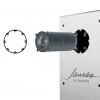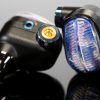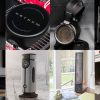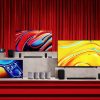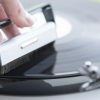The Meze Audio Liric Closed-back Headphones landed on my review desk back in 2022 and whilst there was a lot to enjoy about them, it was my final conclusion that they were a step behind competing products like the ZMF Verite Closed and Kennerton Rognir Planar Headphones.
In fairness, the Liric was also substantially less expensive than either of those other models and instead provided a good middle ground between models like the Audeze LCD-XC and Focal Celeste.
The Liric had a treble forward tuning and despite my preference for headphones that are very open at the top end, at times it could be a bit fatiguing and as a result the Liric was a polarizing headphone; reviewers either loved or hated the tuning without much of a middle ground.
Antonio Meze has proven to be very receptive to his customer base (who are far more important than reviewers) and Meze has proven to be a company that adapts very well to changing preferences.
The Romanian company builds some of the best headphones in the world, and they have always been willing to take a hard look at their own products if the market suggests that something could be better.
We’ve seen the results in the progression of Empyrean to Empyrean II to Elite and now with the transition from Liric to Liric II.
According to Meze, the new iteration took longer to bring to market because they tried a number of changes based on customer feedback. They wanted the Liric II to be that much better.

What’s new?
So what differentiates the Liric II from its predecessor?
Outwardly, the biggest change are the stunning Macassar ebony earcups which are not only more aesthetically pleasing, but also play a role in the retuning of the sound.
The earpads have also been upgraded; the Liric II also features a 4.4mm (connector) terminated hand-braided premium balanced cable instead of the 1.5 meter standard cable that came with the original.
What hasn’t changed are the velvet lined hard-shell case for storage and transport, the pouch for cables, the 3 meter 3.5mm single-ended cable, the .25-inch and airline adapters, and the 2 year warranty.


I would have preferred to see the lengths of the two cables reversed as the 4.4mm premium cable is a bit short for using with desktop setups and the standard cable is longer than needed when mobile, but this is purely personal preference.
Inside, the Liric II uses the MZ4 Isodynamic Hybrid array driver that was originally designed for the Liric which can be thought of as a scaled down version of the driver found in the Empyrean and Elite.
The MZ4 has a nominal impedance of 61 ohms, a sensitivity of 100dB (1mW/1Khz), a frequency response of 4Hz to 92kHz, and a THD of <0.15%.
Rinaro has not been idle though and the new version sports what Rinaro has trademarked as Phase-X, spatial sound imaging. With all the hype around spatial audio right now, it’s easy to misconstrue the aim of this new technology.
The goal of Phase-X is to reduce phase distortion and enable faster transient decay. Phase distortions, reflected sound from the cup, and slower transient decay all contribute to the lack of soundstage heard in most closed back headphones so eliminating these issues helps the Liric II present a wider and more realistic sounding soundstage.
The term “isodynamic” may confuse some as the driver is a planar driver but unlike most planar drivers, the Rinaro drivers sport two distinct voice coils on the diaphragm (thus the hybrid designation).

The top two-thirds of the diaphragm sport a switchback coil trace that is used for production of lower frequencies whilst the bottom section has a spiral coil that is better at producing the higher frequencies.
The combination of two distinct coils on a single diaphragm is unique to the Rinaro drivers and helps them avoid some of the issues commonly found with single coil designs.
Whilst using the same stock driver as the original, the Liric II introduces the Quarter Wavelength Resonator Mask which is a grill designed to cover select openings in the driver frame and help attenuate some the peaks above 7kHz that were fatiguing when listening to the original.
The pressure equalization system is also improved to provide better chamber pressure behind the driver and help reduce some of the warmth in the mid bass and lower midrange that was present in the first iteration.

The combination of the two new technologies combined with the wood earcups helps give the Liric II a voice that is quite distinct from the original despite using the same driver.
For all the changes, the Liric II shares the original frame and most of the design cues remain unchanged as well with the friction sliders, the wide leather headband with a spring steel core, and the 3.5mm ports on the cups.
The weight has increased from 391 grams to 427 grams which can be attributed to the new wood ear cups and new magnetic system for attaching the ear pads to the headphone.
We compared both models and discovered that they felt almost exactly the same from the perspective of weight and comfort levels. We could listen to both models for rather extended listening sessions with no sense of fatigue.

Listening notes
We listened to the Liric II using a number of different desktop and portable amplifiers because we found the original to be somewhat source dependent and wanted to see if the new version was similar.
We also used a mixture of both cables, sometimes using both from a single source (AK SP2000 and Cayin N6ii DAPs) just to get a good idea of what each cable offers the listener.
In the bass range, the Liric II has good depth but the sub bass isn’t emphasised and won’t please those looking for additional impact. What is present in the sub bass, has reasonable weight and some texture.
The emphasis in the low end is in the mid bass region with a focus around 150Hz and a decline on either side of that peak. That emphasis combined with the elevated treble creates a moderately V-shaped tuning that is a bit different than the original.
The mid bass emphasis also helps add a bit of warmth and weight giving the Liric II more body than the original. Mid bass textures are good with plenty of detail and more than enough speed; the Liric II sounds clearer and more impactful overall in this area.
Those who are familiar with the original Liric, will notice this difference between the two models almost immediately.
The transition from the mid bass to the lower midrange is quite clean giving male vocals a mixture of clarity and warmth that is not impacted by the additional emphasis in the bass range. This is another clear improvement over the original Liric.
The result is a midrange that has good detail while providing a very fluid presentation.

Strings and female vocals have more than enough presence and detail without feeling artificially pushed forward of the rest of the instrumentation.
Instruments are easy to isolate in space and have better separation than most closed back headphones; ensembles and string quartets come across with an improved sense of space and clarity overall which was a rather noticeable change from both the Liric and other closed back models in the same price range.
The lower treble follows the same pattern, generally a touch relaxed but with good detail giving the Liric II a sound that is closer to other models in the Meze line-up.
While not having quite the detail retrieval or soundstage performance of the Empyrean, the Liric II is now quite similar its overall tonality.
Through the lower treble, the Liric II is a warm, smooth listen with enough detail to be interesting but without so much emphasis on detail to detract from the overall presentation.
The biggest change is when we move upward into the rest of the treble range.
The treble is moderately forward and balances (or slightly over-shoots) the mid bass emphasis. Vocals benefit from the extra energy as this helps them cut through the mix well.
Percussion snap is good with snare rattle having crisp edges and cymbals having enough energy to sound realistic. Notably though, there is a good bit of source dependence as brighter sounding source material still shares a bit of the character with the original Liric.
Hi-hat and some vocals could sound somewhat unrealistic or even bright depending on the recording.
There is good air and sparkle at the top, but again depending on the recording, sparkle can become sizzle. I appreciate a bit of treble emphasis and found the Liric II to be a nice refinement of the original, but the treble shy may find that it doesn’t go far enough for their ears.
The soundstage width and depth offer a more spacious sounding presentation and there is no question that the Liric II are better than their predecessor in that regard, but there is only so much one can do with a closed back headphone.
Imaging is extremely good with movements easily tracked and instruments easily pinpointed in space. Layering was also good as well, which makes seating the orchestra straight forward. The resulting seating chart is a bit narrower than expected, but with the clear nature of the presentation, each position is very well defined.

Source notes
As noted above, the Liric II is somewhat source dependent, but that dependency is centered on the source file rather than the device chain. We used the RME ADI-2 by itself and paired with the Pass Labs HPA-1 Headphone Amplifier and found the Liric II well driven and well-mannered with either source.
Stepping up to the dCS DAC did improve the Liric II qualitatively and is capable of rather impressive detail retrieval when the source is up to the task. We also paired the Liric II with the Auris Euterpe fed by the RME DAC. This combination had ample power but doubling down on the warmth by adding a tube component detracted from the note weight and wasn’t my favorite pairing.
We tried a couple additional tube amps including the X-duoo Ta-26 and the Drop Ta-84 and found the same general pattern with all three amps.
This allowed us to use a mix of 6SN7, 6922, 12AT7, and 12AU7 pre-amp tubes and 6AS7, PL95, and EL84 power tubes to determine if that would be a good option for listeners who prefer to use tubes in their signal chain.
The end result was that the Meze Liric II is a warm sounding pair of headphones that loses clarity and detail when you go down this path. It would not be our preference considering the overall results.
Portable gear showed similar results with the Astell&Kern SP2000 turning in the best performance. The SP2000 may be primarily designed for IEMs, but it turned out to be a great pairing with the Liric II providing enough detail to bring out all of the capabilities of the headphones and enough power to deliver big bass and soaring treble when needed.
The Fiio M11 Plus was a good match as well, but didn’t deliver quite the level of clarity or detail retrieval of the A&K DAP.
We also tried a Cayin N3Pro to see if the tube results in desktop devices would be similar to portable devices and indeed, the N3Pro in tube mode was not as good as the solid-state mode when paired with the Liric II.
How about something like the Korg Nutube? The Cayin N8ii in tube mode was a good pairing; it lost a bit of detail, but gained additional body and a bit of soundstage size in the process.

How about the current range of Dongle DACs?
The Questyle M15 worked well with the Liric II using the balanced cable. Detail levels were good and there was more than enough power and speed. This was my favorite pairing of the dongles.
The iFi Go Bar was also a good match although I didn’t find it quite as detailed as the M15, overall.
The Astell&Kern HC2 dongle was not as good a match as the 43198 chips are a bit warmer than those found in the other dongles and just added another layer of coloration that was not required.
Final Thoughts
Does the Meze Audio Liric II offer enough of an improvement over its predecessor to be considered a success and is it worth the money?
The Macassar ebony earcups completely change the design and perceived value of these closed-back headphones and there is no question that they fit well and can be enjoyed for many hours without any sense of fatigue.
Do they offer the ethereal clarity of the Empyrean?
Very few headphones achieve that rather lofty goal and to expect a closed-back headphone to come close would be unrealistic.
There is an increase in warmth, but the overall tuning offers a more balanced sounding headphone with excellent dynamic capabilities and strong levels of detail retrieval.
The overall presentation is also clearer sounding with an increased sense of soundstage depth and width.
The treble shy may still feel the tuning is a bit too much of a good thing at the top end, but it’s hard to argue that the new tuning is more refined than the original.
As long as one is careful with their choice of amplification; the Meze Audio Liric II gets one closer to the “house” sound that made this Romanian company one of the most respected brands in high-end headphones.
A very impressive upgrade over the original.
Where to buy: $2,000 at Crutchfield | Headphones.com | Meze Audio
Related Reading:


